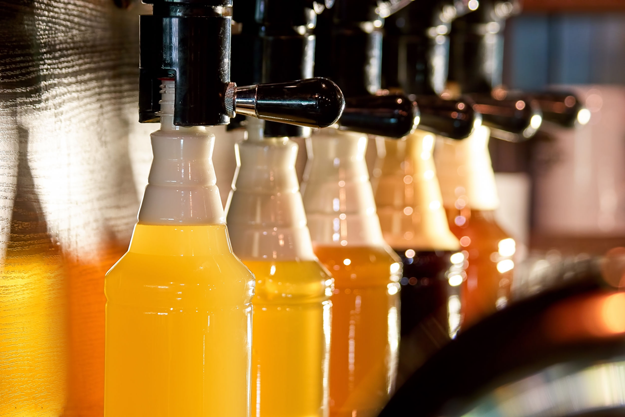Topics: Advanced Planning and Scheduling, Lean Manufacturing, Implementation, APS, APS, beer brewing, Demand Forecasting, Industry 4.0, Demand planning, Production Scheduling Software

Capacity planning is the process of determining the resources and capabilities required to meet the demand for goods or services. In a food and beverage manufacturing facility, capacity planning is critical to ensure that production can meet customer demand while maintaining efficiency and profitability. In this blog, we will explore the importance of capacity planning in a food and beverage manufacturing facility, the key factors to consider in capacity planning, and best practices for effective capacity planning.
Importance of Capacity Planning in a Food and Beverage Manufacturing Facility
Effective capacity planning is crucial to the success of a food and beverage manufacturing facility. Without proper planning, the facility may not be able to meet customer demand, resulting in lost sales and revenue. On the other hand, overcapacity can lead to unnecessary costs and inefficiencies. In addition, capacity planning can help the facility identify areas where it can improve its production process, such as reducing waste, increasing throughput, and improving quality.
Factors to Consider in Capacity Planning
When planning for capacity in a food and beverage manufacturing facility, several key factors should be considered:
Customer Demand: Customer demand is the primary driver of capacity planning. Accurately forecasting demand is critical to ensure that the facility can meet customer orders and maintain customer satisfaction.
Production Process: The production process should be analyzed to identify bottlenecks and areas where improvements can be made. This can include reducing waste, increasing throughput, and improving quality.
Equipment and Technology: The facility’s equipment and technology should be evaluated to ensure that they can support the desired production levels. This can include upgrading existing equipment or investing in new technology.
Labor and Skill Levels: The facility’s labor and skill levels should be evaluated to ensure that the workforce can meet production requirements. This can include training and development programs to improve skill levels and reduce turnover.
Supply Chain: The facility’s supply chain should be evaluated to ensure that it can support the desired production levels. This can include working with suppliers to improve lead times and reduce costs.
Best Practices for Effective Capacity Planning
To ensure effective capacity planning in a food and beverage manufacturing facility, the following best practices should be considered:
Accurately Forecast Demand: Accurately forecasting customer demand is critical to ensure that the facility can meet customer orders and maintain customer satisfaction. Historical sales data, market trends, and customer feedback can all be used to develop an accurate demand forecast.
Use Data Analytics: Data analytics can be used to analyze production data and identify areas where improvements can be made. This can include reducing waste, increasing throughput, and improving quality.
Invest in Technology: Investing in technology can help the facility increase efficiency and reduce costs. This can include automation, robotics, and advanced analytics.
Improve Workforce Skills: Improving the skills of the workforce can help the facility improve production processes and reduce turnover. Training and development programs can be used to improve skills and knowledge.
Collaborate with Suppliers: Collaborating with suppliers can help the facility improve lead times and reduce costs. This can include working with suppliers to improve delivery times and reduce raw material costs.
Capacity planning is critical to the success of a food and beverage manufacturing facility. Effective capacity planning can help the facility meet customer demand, increase efficiency, and reduce costs. When planning for capacity, it is important to consider customer demand, the production process, equipment and technology, labor and skill levels, and the supply chain. By following best practices such as accurately forecasting demand, using data analytics, investing in technology, improving workforce skills, and collaborating with suppliers, a food and beverage manufacturing facility can effectively plan for capacity and maintain a competitive advantage.
Topics: Advanced Planning and Scheduling, Lean Manufacturing, Implementation, APS, APS, beer brewing, Demand Forecasting, Industry 4.0, Demand planning, Production Scheduling Software
0 Comments
No video selected
Select a video type in the sidebar.







LEAVE A COMMENT